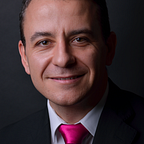How can masterful executive coaching unlock creativity in an executive leader? What are the specific competencies of an ICF master coach helping his clients become more creative?
An integral definition of creativity
People already wrote everything about inner creativity, creative spirit, innovation within organizations, etc. In 2016 I elaborated the theory of “integral creativity and innovation”, in a try to put all the other views under the most comprehensive umbrella of understanding, the integral meta-theory (Ken Wilber).
Shortly, integral creativity says one can get creative if:
1. There is a focus question;
2. One is interested in solving it;
3. By using his creativity;
4. Plus specific creative thinking instruments;
5. Plus sharing his options and ideas with others;
6. In an environment defined both by limiting constraints and freedom of thinking.
A masterful executive coaching session checks all the six conditions mentioned above. The client brings the focus question scorching him and the interest to solve it. The coaching contract and the logistical aspects (duration, technology limitations. The coach is being present, listens actively, formulates questions, summaries, reflects — are all creative thinking instruments requiring the client to play with many different perspectives and sometimes to waste several ideas before reaching the key one.
The coaching competencies ensuring clients creativity
A master executive coach is a facilitator of creativity. He brings several key competencies ensuring that (the following are from The Updated ICF Core Competency Model of the ICF:
- Develops and maintains a mindset that is open, curious, flexible and client-centered
- Remains aware of and open to the influence of context and culture on self and others
- Partners with the client to identify what they want to accomplish in the session, what the client believes they need to address or resolve to achieve what they want, the measures of success for what the client wants to accomplish, to manage the time and focus of the session
- Partners with the client to create a safe, supportive environment that allows the client to share freely.
- Creates or allows space for silence, pause, or reflection
- Focuses on what the client is and is not saying to support client self-expression
- Facilitates client insight and learning by using tools and techniques such as powerful questioning, silence, metaphor, or analogy
- Partners with the client to transform understanding and insight into action.
The possible missing link
What is not a rule is that the client believes in his creativity. There are people, and executive leaders do not make an exception, having a not-so-flattering perception of their creative capacity. At its core, our innovative spirit manifests when we dedicate ourselves to solving something of very much interest to us. Otherwise, our reactive nature (trying to fix and solve, not create) replaces our creative energy.
At Penguin Coaching, I partner with the prospective client to determine client-coach compatibility and creative drive in a “Are we a good fit?” short session. I coach only ambitious executives and teams who have already had outstanding results to get actionable insights and increased commitment to maximize their potential and create new significant results in their lives and work.
Penguins and creativity
Penguins are birds having dense bones, which makes it easier for them to dive. Penguins can drink saltwater. It has to do with a specialized gland that filters out salt. These features of the penguin imply two symbolic points: 1) Evolution and 2) Unconventionality.
Penguins are highly social and communicative creatures; they rotate their group formation, allowing the outer penguins inside the inner circle. That way, everybody gets a chance to be in the middle of the warm “group hug!”. The penguin encourages teamwork, social connection, unity, and working for the good of the many rather than the few’s needs.
Penguins live anywhere between 50–75% in the water and the rest on land. Water is symbolic of dreams, emotion, and intuitive insight. Moreover, the penguin’s vision is better underwater than on land. The penguin encourages us to see what’s going on in the unknown.
The penguin is also a beautiful symbol of renewal and re-creation. Penguins molt all at once during a 3-week process called “a catastrophic molt.” Penguin symbolism reminds us that although things may seem chaotic right now, there is a definite order in this chaos. It’s a metaphor for dying to ourselves, letting go of fears, false beliefs, etc.
The penguin is a totem expressing all our values: transformation, adaptability, partnership, purpose, order, devotion.
